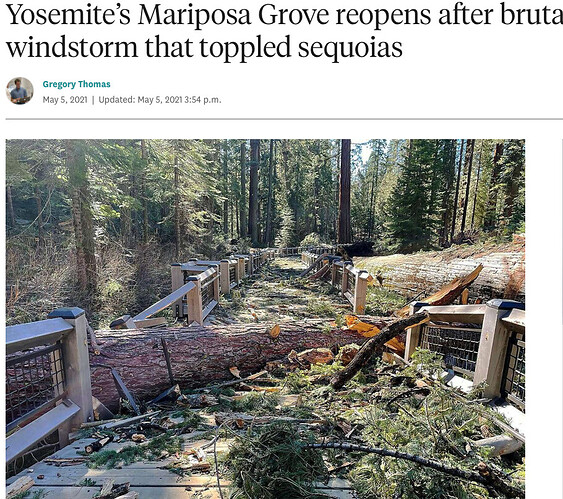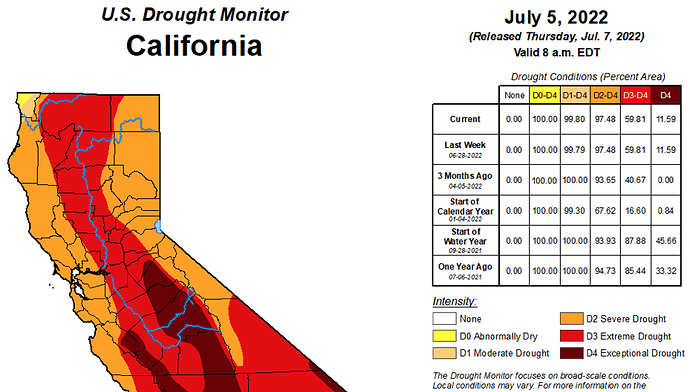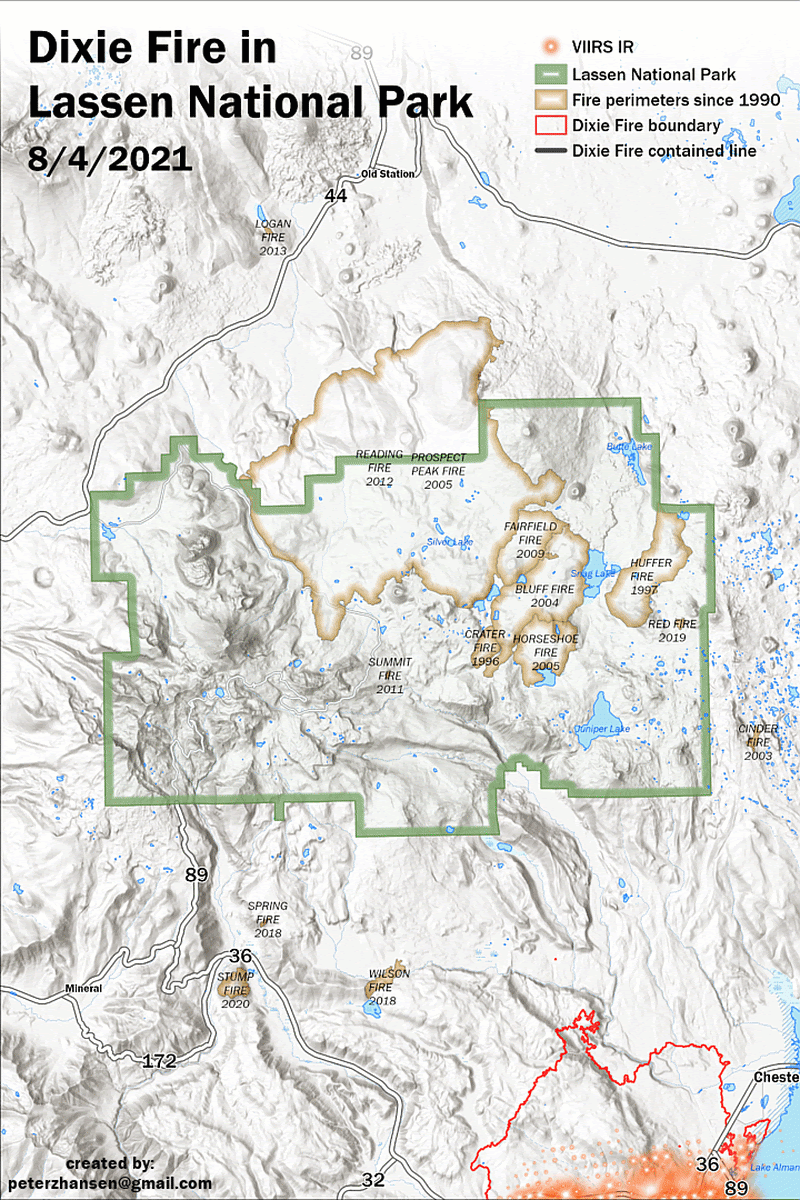And Now back to our original program - Who left the stove on?
Thank you for writing this up, and I don’t disagree with much of it.
Was it really a policy choice? I don’t think NPS actively trying to put fire back on the landscape right now is a factor in how they have run the response. After it made the initial run, there was no putting genie back in the bottle regardless of strategy. Other than bringing in dozers, which probably wouldn’t have changed the equation with long-range spotting, they haven’t seemed to be holding back on the aircraft.
You cannot do prescribed fire during the heat of fire season… the point of the fence is that if you want to do that… plan for it. Build lines, staff and then manage it. What you cannot do is let a fire go crazy and then ask everyone else to bail you out.
I think you can burn in-season, in some fuel types like grass and brush where you have a proper catchers mitt - like burning a couple thousand acres of rangeland in May to surround a unit you want to burn in July. Or burning an island of low-severity burn surrounded by thousands of acres of high-severity burn a few years after something like the Dixie Fire.
I was obviously off-base in my comment about running this as an rx burn right now, got carried away in the fire behavior we were seeing, and was thinking about what you could do as a burn boss with the millions of dollars in resources we have on this thing.
I do think we are up against a wall with changing burn windows. We have several million dollars worth of contract timber burning sitting on a shelf for 3 years now due to a non-existent fall burn window in upper elevation areas on the Tahoe NF.
With the exception of as I remember early in this discussion the AA requesting aircraft early up then having to re request them more than once because he didnt have any
This is shades of the station fire on the ANF. We need to listen to the experience running these incidents
And I will also add that I am not saying this fire is or compares to the station fire now.
These types of things add to the ole swiss cheese model when we try to rationalize all of these discussions.
Local Govt agencies are not financed through the Federal Govt.
Be careful with broad statements like these. There a lot of new type 3s and type 1s in stations in addition to an extra body floating around on a lot of engines courtesy of Federal tax dollars. Also a not insignificant amount of training is financed by the Feds.
Yup, the season is getting longer, the shoulders are getting tighter, the budgets are still paying for humans with “seasonal” in the title. There comes a point where it’s all the “heat of the fire season” somewhere in the US calendar year or heck, just R5. We need this discussion NOW, so that budget and plans can prep for action when the time comes, and get the population educated to GOOD fire so the facebook warriors don’t go berserk seeing trees on fire. And good grief can we please remember the nuance in all of this? People are reacting as if some want 100% MIST in the Sierra Foothills in August.
Sounds like you read stuff posted on the Talk of the Hill Facebook page.
 No comment
No comment
I remember AA asking for permission to use retardant multiple times not criticizing the AA but just wondering why not have the tankers load up with water and get some drops in until they get approval.
BrushSlasher, I felt the same on the ANF- Station Fire and as AA actually used the Martin Mars (6,000 gallons) Made three high drops over a deep canyon just before sunset. Next day two IHC crews were able to tie that 1/4 mile line in, because the three high water drops raised canyon RH to 50% overnight.
I / we don’t know how much is organizational culture or policy implementation that they appear to drag their feet in the first hours when an Initial attack has the greatest possibility of success. We will also never know if an aggressive initial attack would have stopped the fire. Accessible and under 10 acres at the end of the initial burning period I going to estimate there was a better that 50-50 chance. Unfortunately we will never know. The frustration is that the attempt was not made. As many have mentioned the heat per unit area is huge. Responses to fires reported in areas with fuels in this volume - condition should have comeserat response and pre plans for massive air and boots on the ground attack. What is happening and going to happen was 100% predictable, another source of frustration.
BTW, I along with many others truly appreciate all your work and willingness to share your thoughts.
With an “exceptional drought” occurring in the Yosemite area and so many downed trees you would think the response would have been on the high side:
"Fierce windstorms at the start of the year that toppled 15 trees and damaged facilities across the park forced Yosemite to shut down for nearly two weeks. Mariposa, a popular tourist destination located just inside the park’s south entrance at Wawona, took the brunt of it.
Fifteen of the grove’s approximately 500 giant sequoias were blown down along with sugar pines and white firs. Trees fell across the grove’s boardwalks, destroyed restrooms and blocked trails. Repairs were initially estimated to cost $200 million."
Fire is not a tame domesticated dog that blame falls on the owner for its misbehavior. Fire is the grisly bear that can be prodded and coerced to go where you want to by banging pots and pans. Most of the time it works. Sometimes the bear is just hungry and goes where it wants to feed. Kept from food long enough, it goes into your house and pantry and consumes everything.
Everyone knows our forests are diseased, drought stricken, overgrown and extremely fire prone. Have been for some time. We also know fire is an essential part of ecology.
So how much responsibility falls on the shoulders of people who choose to continue to live in areas suffering from these conditions? They probably had zero input into how these conditions came about in the first place, but still choose to live near the hungry bear.
“Fire season is year round now in California.” Heard that before? I went to more fires in January and February last year than in March, April, May and June! So how do you have an out of season prescribed burn?
Wildland stewards and managers need to be able to do their jobs when opportunity show itself, planned or unplanned. We can talk about a billion more dollars budgeted and 10’s of thousands of more people hired for prescribed burning but us that really going to happen? So when it doesn’t, do we do nothing because conditions aren’t ideal?
Fire, ecology and meteorology aren’t perfect sciences. Neither is medicine and surgery and yet we still let doctors “practice” medicine on us. It’s all about doing the best we can with the hand we’re dealt. How many fires started last year when there was zero staffing available to IA them? How many quietly went out on their own and we never heard about them. I can think of just one that got up and ran and went through a town without much damage.
Meant to give some food for thought. This is more like a 7 course meal with some things you just don’t want to eat.
Peace!
Giving decisions of such magnitude and consequence to any civil service person or group is not how government works. As flawed as the system is there must always be public comment and input in such significant decisions.
I am impressed at the amount of keyboard operators there are in this thread! You all must be some of the best OG Operations Section Chiefs that I have seen in my 25 years of doing this. I get that there will always be Monday morning quarterbacking, but in a time of instant live feeds and scanner listenening, we have Sunday morning quarterbacking. How about let’s give some grace to the professionals on the ground to do the right thing. None of us are in this profession set out to do the wrong thing. Every agency has different sets of SOGs and focuses. Let’s except them for what they are and move on. In the end we all want the same outcome… we all come home. There are things that need to change but we are not going to solve them being the fire gods we pretend to be in this forum.
I will probably be suspended for this so I will graciously see my self out.
Back to the original post which began all of this… is there space to manage a fire for ecological benefit in our current new fire environment? The answer is yes. But none of it exists in a vacuum. The decision has to be science based with a clear and defined set of objectives.
The AHJ has to plan for it, staff for it and then be prepared to manage it The reason I posted the link to the Reading Fire, is that it was an example of an early season fire that was allowed to burn. As it got later in the season it woke up and made some big runs at several communities and required significant augmentation of resources to contain. In that time period several other fires broke out and destroyed communities. Valuable resources that were not from the NPS were tied up on a managed fire.The same situation occurred last year with the Tamarack.
We should not treat anyone who wants to manage a fire any different than a homeowner who has a burn pile. Have a line around it that will keep the fire from escaping, have a water source and a shovel. These requirements are put in place so that the fire department does not have to be called every time someone who has a burn pile gets nervous or the pile goes up faster than they anticipated.
The mutual aid system ( CFAA, CFMA, MMU) is not intended to support manged fires. It is not fair to the citizens and to the agencies who have to come and try and control the fire once it is outside the box.
As far as people having to accept the responsibility for living in the WUI… there is a certain amount of risk that they accept.
The point of the analogy that seems to be missed is that you cannot blame the results of your decisions on the people who are affected. It is not fair to allow your dog or bear to roam the neighborhood and cause havoc.
To be clear I am not suggesting that the current fire is being managed, just responding to a post that discussed the benefits of managed fire. The original post in this string outlined an article where prescribed fire escaped and destroyed several communities in New Mexico.
Keyboard operators, Sunday morning quarterbacks? Disparaging those who have a different point of view does not make an argument stronger. While I totally agree that nearly everyone in the fire community goes to work everyday to do the best right thing at all times, the argument is the “SOGs and focuses” are out of line with objectives, re-introduce fire to rebalance the forest-fire health and protecting the wellbeing of the public and meeting public expectations.
Norcal, I agree 100% with your point about having contingency built in before you light it. I definitely didn’t articulate it very well, but that was kind of where I was trying to go with my science fiction in-season burning scenario - it would be great if the people trying to keep this fire out of the Mariposa Grove and Wawona had been snagging their control lines all spring, prepping Highway 41, already had the tricky parts plumbed, and had the luxury of starting the fire at the top of the hill, instead of midslope.
I think a big failing of the project that caused the Hermits Peak fire was failure to recognize the potential for such an enormous escape. In the current climate, we can’t just put fire on the ground in the middle of 500,000 acres of contiguous forest which hasn’t had natural fire in a century without some serious strategy. If we are going to burn in timber, we need to look at the landscape-scale for opportunities to minimize potential for a major escape before we light - for example, putting fire back into a landscape already fragmented by previous high-severity fires, or sequencing large-scale thinning and burning units so they slowly build a network to contain future prescribed fire entries. We had some real opportunities to do this during the heyday of biomass thinning in Northern California (about 1985-2010). Tens of thousands of acres were biomass-thinned in the Almanor Basin, and could have been followed up with a program of underburning fairly easily, but private landowners weren’t on board, it wasn’t a priority for the agencies, and nobody knew what was coming (near total destruction of timberlands in Dixie Fire). https://earthengine.google.com/timelapse#v=40.35305,-121.17864,10.363,latLng&t=0.1&ps=50&bt=19840101&et=20201231&startDwell=0&endDwell=0
As of an aside, I’d add there’s a lot we can’t know about how each action we take will affect the future. The Reading Fire, as messy as it was, may have kept the Dixie Fire from burning all the way to Burney or Shingletown nearly a decade later, and the Caples Burn (escape) helped keep Kirkwood from burning up during the Caldor Fire. The two weeks where Dixie was spreading very slowly in the Reading Burn (Reading covered this ground in 2 days) bought time for firefighters to fire out Highway 36, saving the Lake Almanor Peninsula and Westwood, and also to check up the fire before it got to Susanville and Janesville. A lot of resources that might have been needed to protect Old Station or parts-west in last week of August were instead available to go to Caldor to save Meyers and Christmas Valley.



